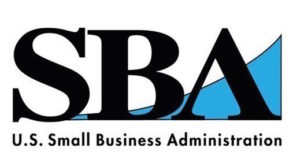In general, I feel like I’m fairly even-handed in how I discuss the U.S. Department of Veterans’ Affairs’ (VA) Center for Verification and Evaluation (CVE), which processes applications for inclusion in the VetBiz Registry (You must be recognized as a veteran-owned business in this registry to compete for VA set-aside work). The process is still undergoing growing pains, which I understand; but it has also back-pedaled recently with some of its recent “improvements” (to include the implementation of a new bifurcated process, which unnecessarily adds a step to the process). I generally cover any update with the CVE, since a lot of my readers are veteran business owners who are listed in the CVE’s VetBiz registry and depend on VA set-aside work for their livelihood.
One topic I’ve bitten my tongue on – for some time now – is the verification statistics the VA posts on its website. Finally, I’m going to say something: in my opinion, these statistics are misrepresentations, and veteran business owners should not be putting any stock into them when seeking either verification or reverification in the VA’s VetBiz Registry. They should assume the process should take at least three months, and carve out the time accordingly. They should also completely ignore the “success rate.”
First of all, the VA is claiming that there is a 99% success rate in verification (through June 2016). This figure is not real (at all), because it does not include veterans who withdraw their applications when the CVE determines they are ineligible, rather than receive denials. Because no one in their right mind would say “sure, send me a denial letter” this means that NO ONE elects that decision, so hardly anyone receives a denial to be counted.
The only reason why the 1% denial rate exists (as opposed to 0%) is because those veterans didn’t receive the email and didn’t elect that option in time. Or maybe they were so fed up by the process that they never responded and therefore received a denial by default.
Second of all, the VA is claiming that it only takes 42 days for verification, and 31 days for reverification. Where on earth is the VA getting this estimate? Is it only counting Tuesdays and Thursdays? (As a note, the statistics don’t specify whether these are in business days or calendar days). Especially recently, I have seen applications languish in one stage for weeks, even when the application should have no issue with moving forward and/or getting approved.
The statistics homepage provides a clue as to how the VA is able to manipulate that number. It says that the clock only starts running once a “complete” application is received. That means that the business has to get through the Initiation stage, which is the first stage where the CVE checks an application for “completeness” and then moves it along to the Examination stage.
“Completeness” doesn’t mean that an application contains all the basic required documentation. It means that an application has also submitted anything else the CVE feels is necessary for it to evaluate for eligibility, which isn’t necessarily on the required documents list. The CVE can take its time getting to an application in this first stage; then, once the veteran business owner has submitted any additional information, take its time again in marking the application as “complete” and putting it in the Examination queue. Then the clock starts running. That means there can be up to an entire month unaccounted for in the processing time (perhaps more). Not only that, but the VA stops the clock every time it asks for additional documentation (until it is uploaded and submitted by the business owner).
If the CVE needs to take 80 or 90 days to process applications – which I believe is a more accurate figure – that’s understandable. It takes time to verify eligibility (which we want to be done correctly), and resources are limited. However, the CVE claims a processing time that is less than half the real figure; and it also grossly skews its approval rate by not counting the many businesses who withdraw due to frustration with document requests or eligibility issues. This misrepresents to veteran business owners what to expect during the verification process, and this runs contrary to the CVE’s goal of helping veteran business owners.
What do you think? If you have an experience to share – positive or negative – that touches on wait times (or other VetBiz issues such as document requests), please leave a comment!
*Did you find this article informative? If so, sign up for Sarah Schauerte’s legal blog on veteran business issues at: https://legalmeetspractical.com.








